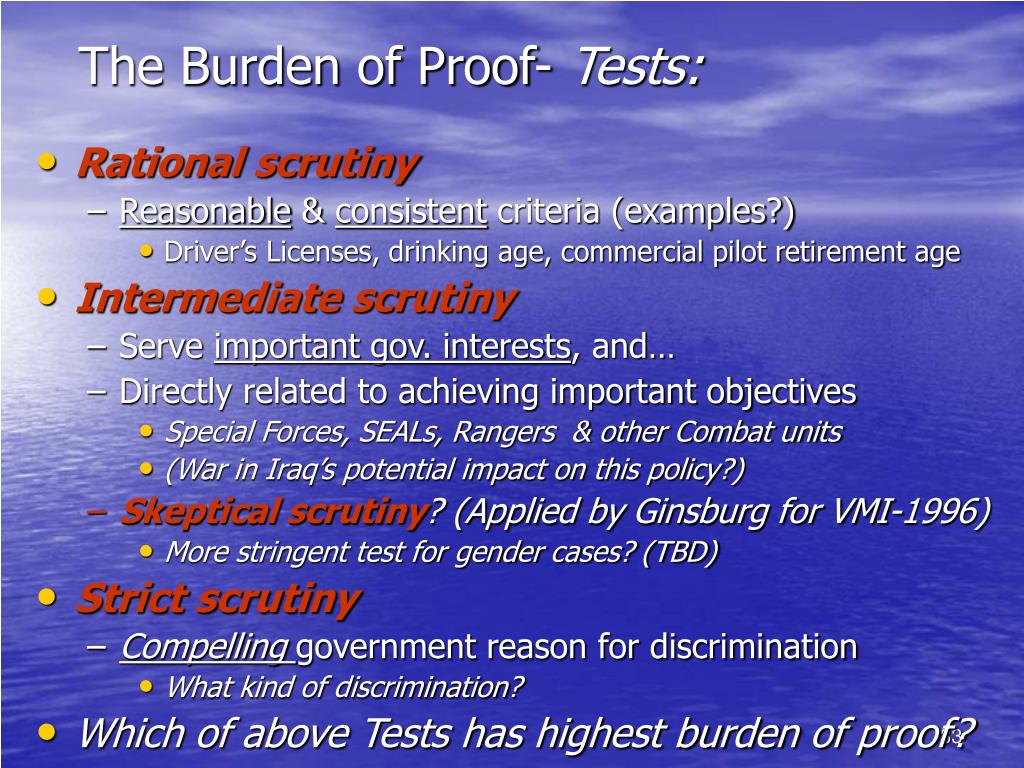

EU legislative acts that interfere seriously with important rights.

The rational basis test is generally used when in cases where no fundamental rights or suspect classifications are at issue. In this landmark ruling, the EU judiciary introduced a strict scrutiny test for. The intermediate scrutiny test and the strict scrutiny test are considered more stringent than the rational basis test. bona fide, in the strict scrutiny test was singled out by the Court as the determining factor in rejecting the argument for employing the heightened level of. There are three judicial review tests: the rational basis test, the intermediate scrutiny test, and the strict scrutiny test. To pass the rational basis test, the statute or ordinance must have a legitimate state interest, and there must be a rational connection between the statute's/ordinance's means and goals. To meet strict scrutiny, a law must satisfy two requirements: It must serve a compelling state interest and it must be narrowly tailored to serve that interest. A judicial review test is what courts use to determine the constitutionality of a statute or ordinance. There are three judicial review tests: the rational basis test, the intermediate scrutiny test, and the strict scrutiny test. To pass the strict scrutiny test, the state must demonstrate that the state has a compelling governmental interest in the program or law, that the law or. To pass strict scrutiny, the legislature must have passed the law to further a 'compelling governmental interest,' and must have narrowly tailored the law to achieve that interest. Strict scrutiny is a form of judicial review that courts use to determine the constitutionality of certain laws. The rational basis test is a judicial review test. Then, what is the scrutiny test Overview.


 0 kommentar(er)
0 kommentar(er)
